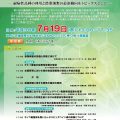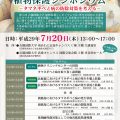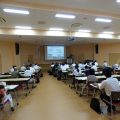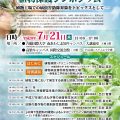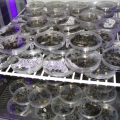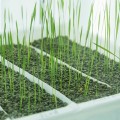H. Ishii1,2, K. Nishimura1, and K. Tanabe3
1National Institute for Agro-Environmental Sciences, Tsukuba, Ibaraki, Japan
2Kibi International University, Minami-awaji, Hyogo, Japan
3Tottori University, Tottori, Tottori, Japan
Pathological specialization of Venturia nashicola, the cause of Asian pear scab, and resistance of pear cultivars
Scab is the most serious disease of Asian pears and the control of this disease largely relies on spray application of fungicides. As a result, the isolates of Venturia nashicola resistant to benzimidazole, as well as sterol demethylation inhibitor (DMI), fungicides have been selected and widely distributed in the pathogen populations. To minimize the use of fungicides, the breeding of scab-resistant pear cultivars (cvs.) is important. Furthermore, survey of the pathological specialization of V. nashicola is necessary to assess the durability of scab resistance. The race 1, 2, and 3 isolates, each differing their pathogenicity to the Japanese pear cv. ‘Kousui’ and the Asian pear strain ‘Mamenashi 12’, have been reported previously in Japan. In this study, new other isolates carrying distinct pathogenicity from the known three races were found from China and Taiwan based on inoculation tests using the monoconidial isolates and potted trees of the differential pear cvs. Jingbaili, Yali and others. They were then designated to the races 4, 5, and 6 of V. nashicola. It was also found that the race 2 isolates were widely distributed in China. In the inoculation tests, both the Japanese pear cv. ‘Kinchaku’ and the cv. ‘Xiangli’ of Pyrus sinkiangensis (fragrant pear in China) showed no visible symptoms on the leaves inoculated with all of the six races so far tested. This high scab resistance of ‘Kinchaku’ and ‘Xiangli’ can be utilized for breeding program as useful genetic resources in the future.

